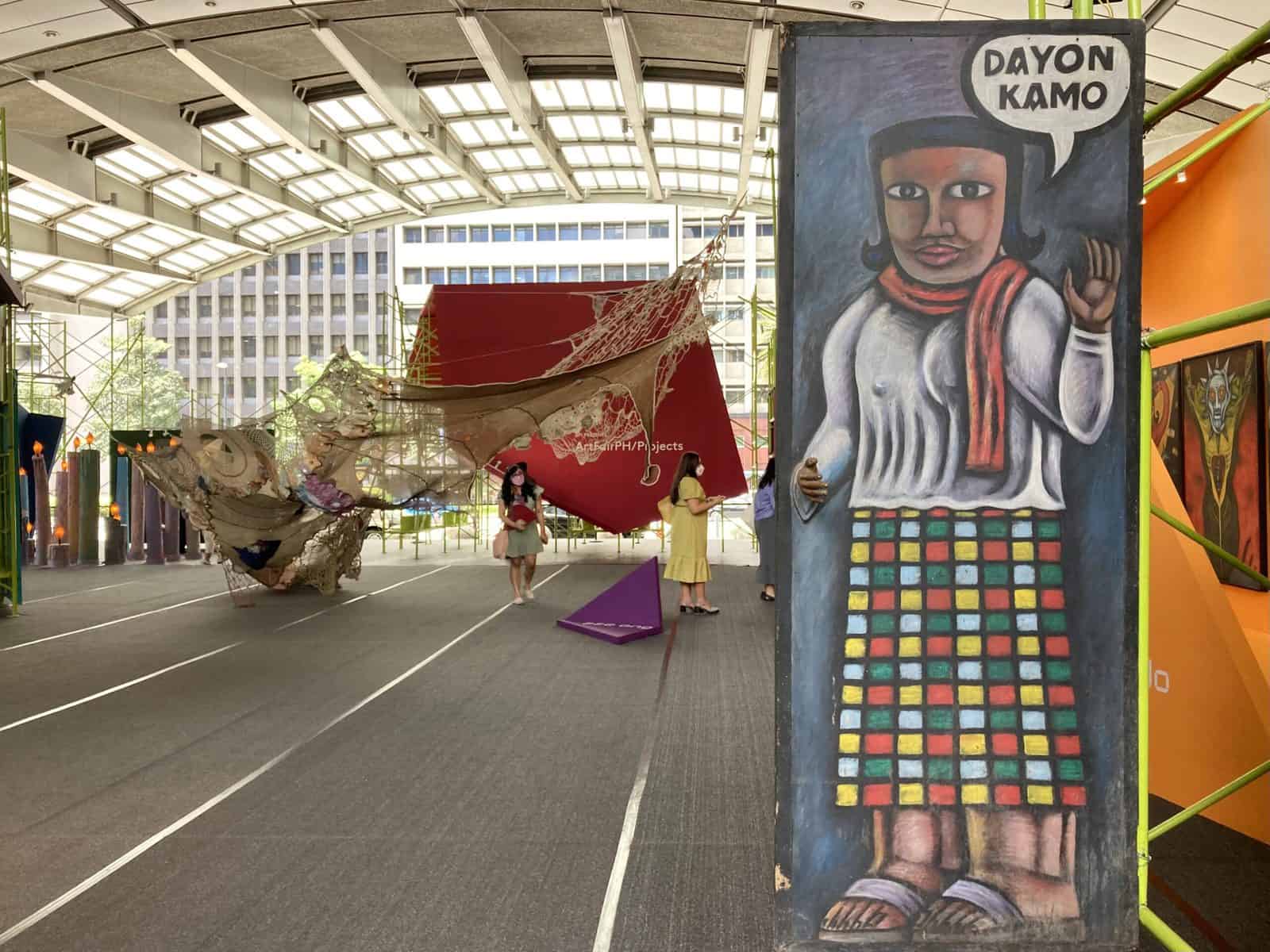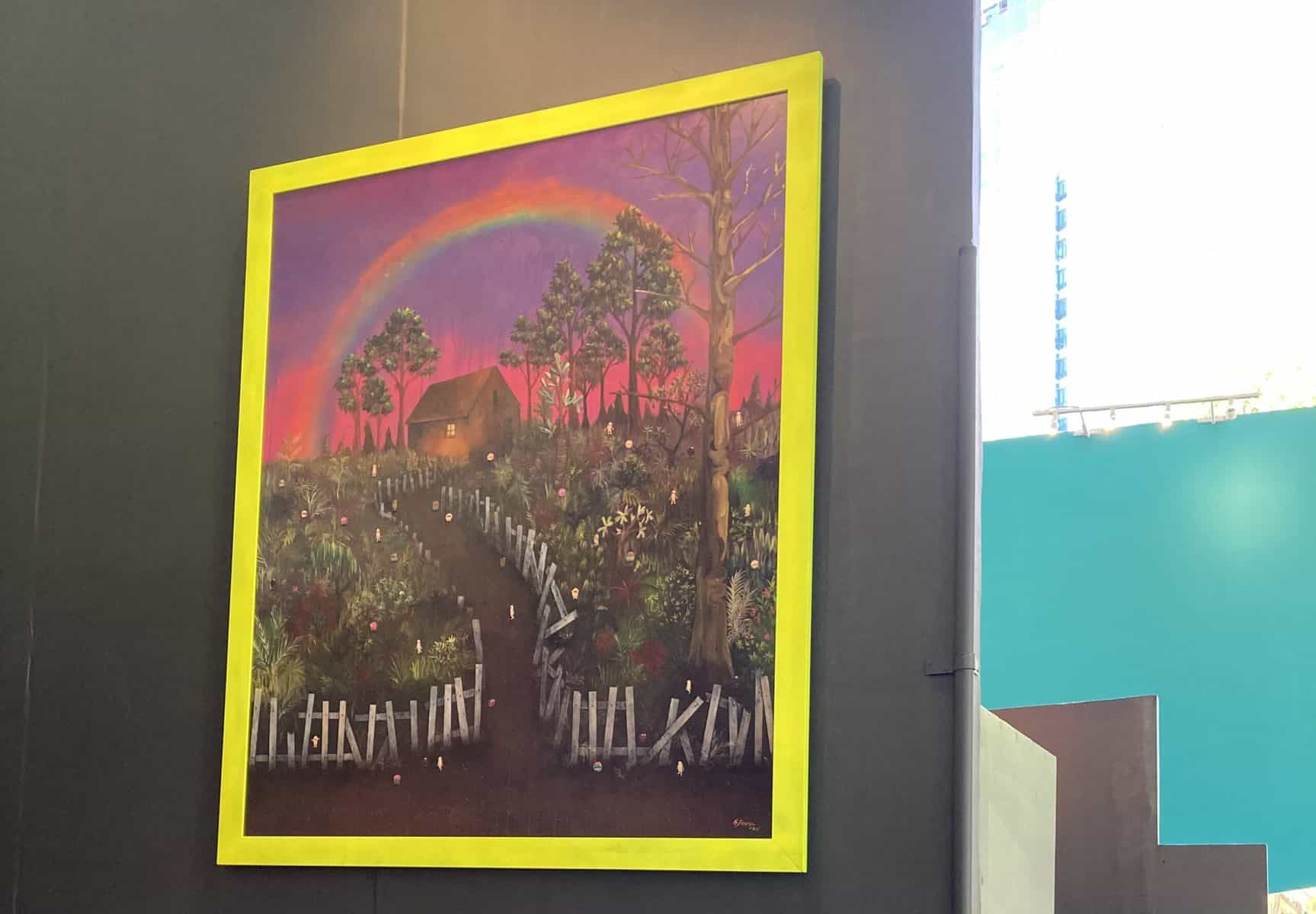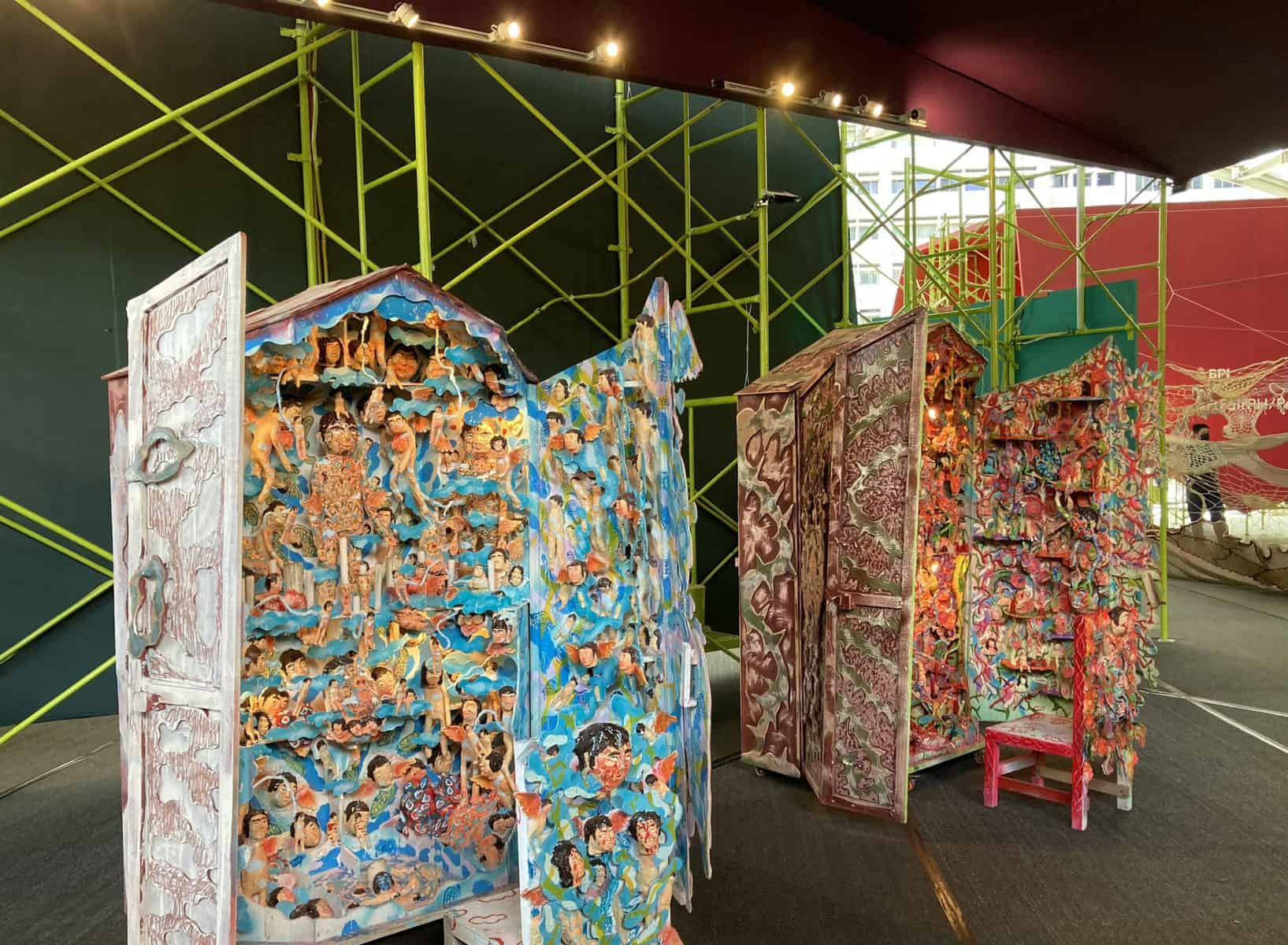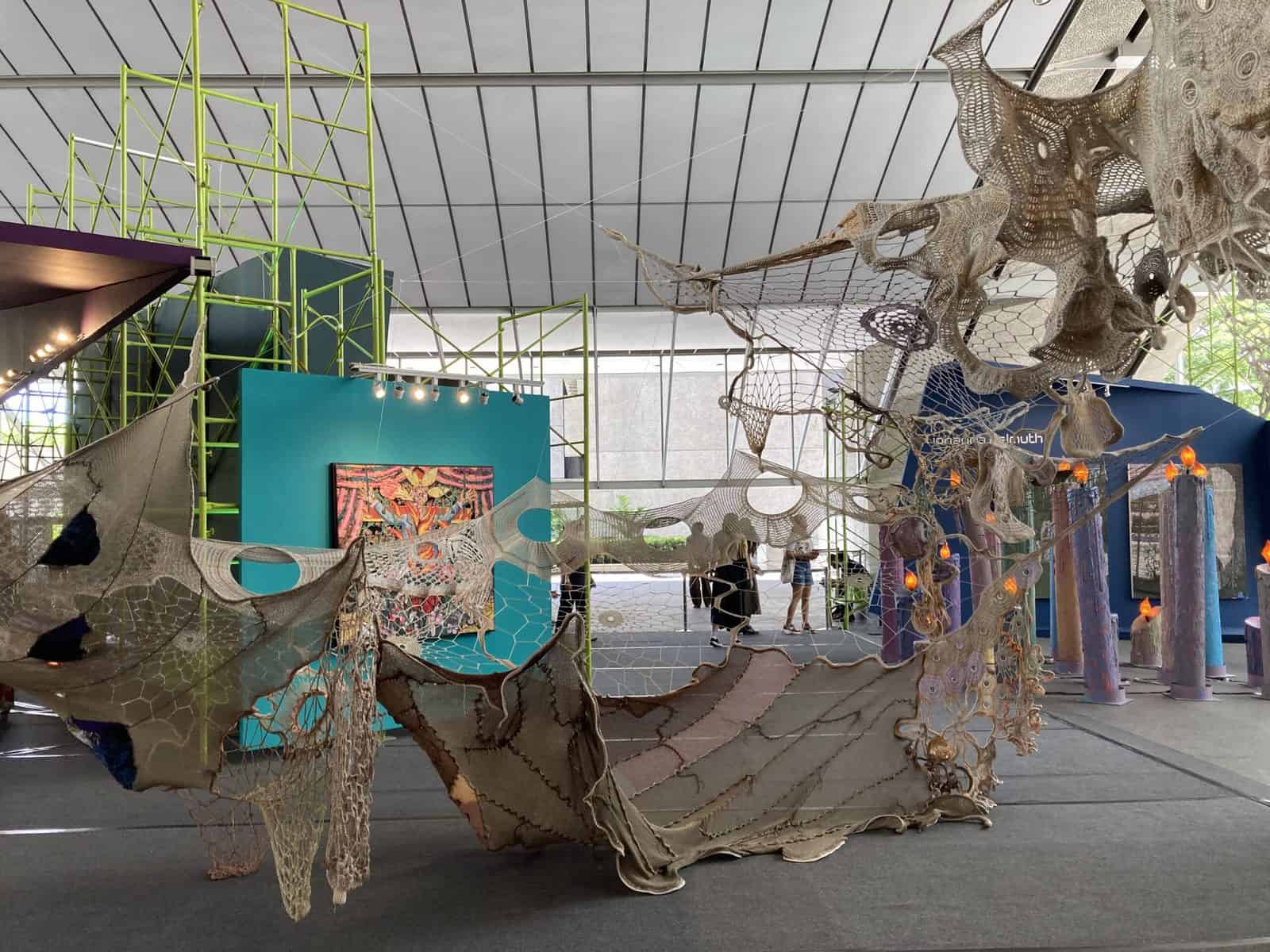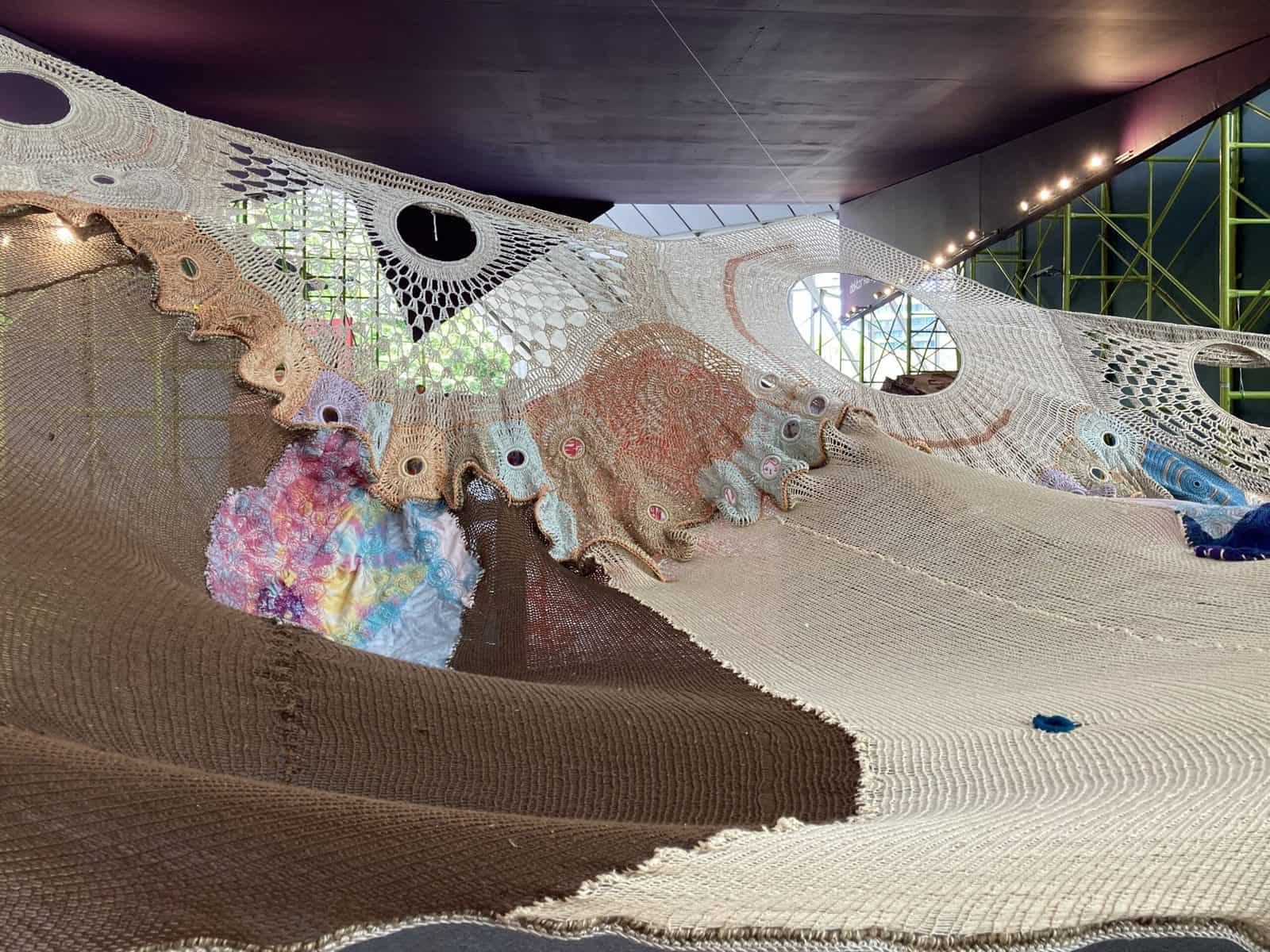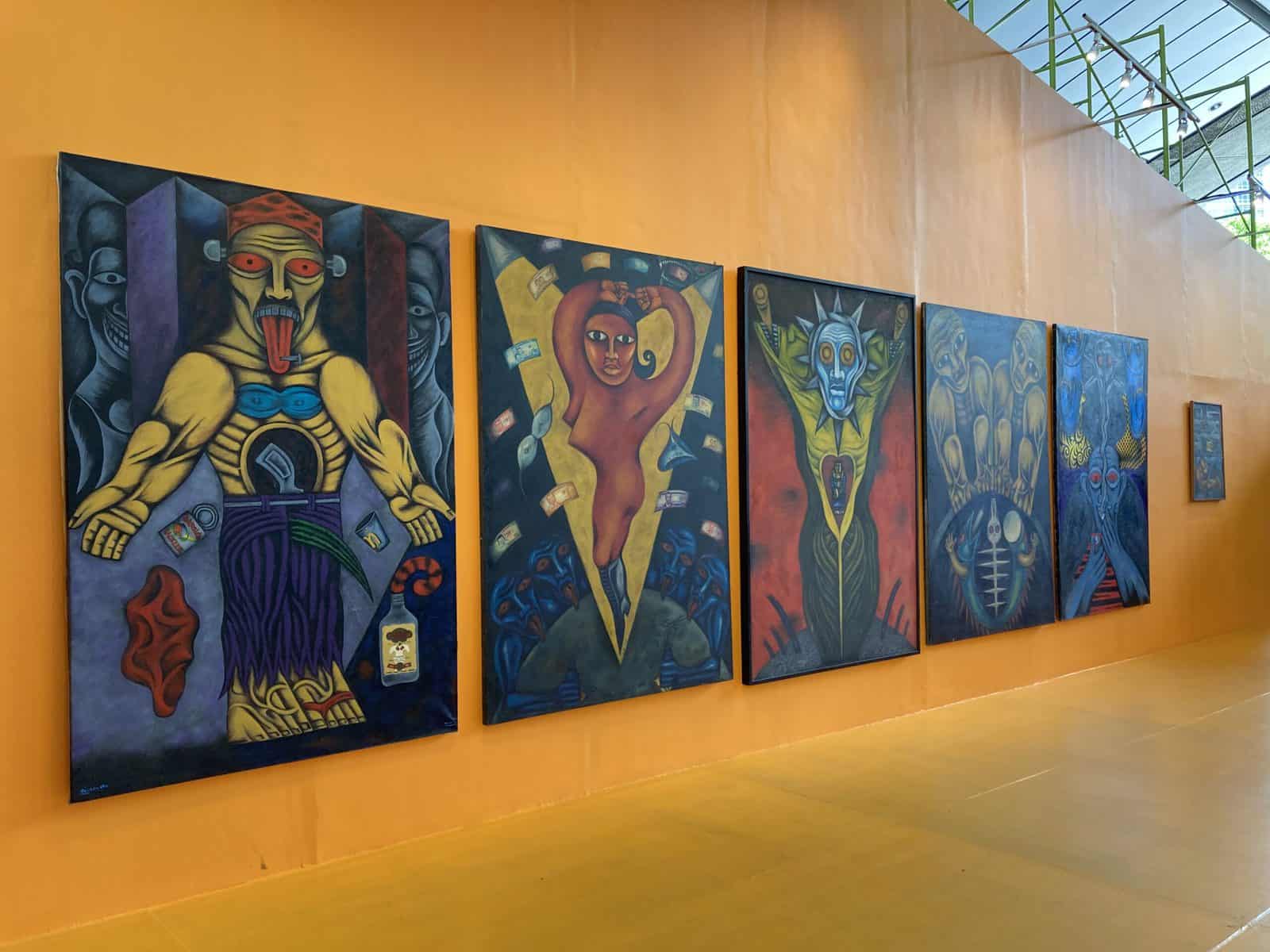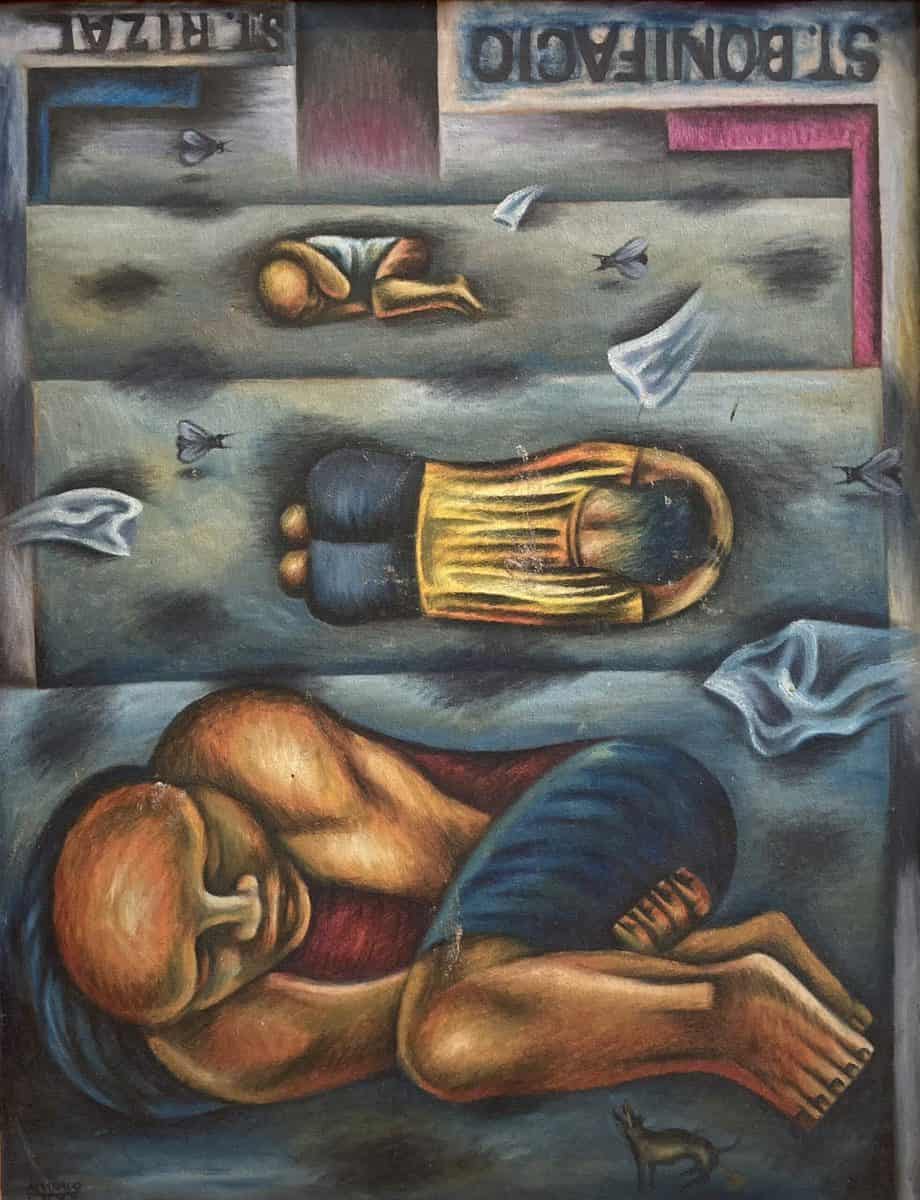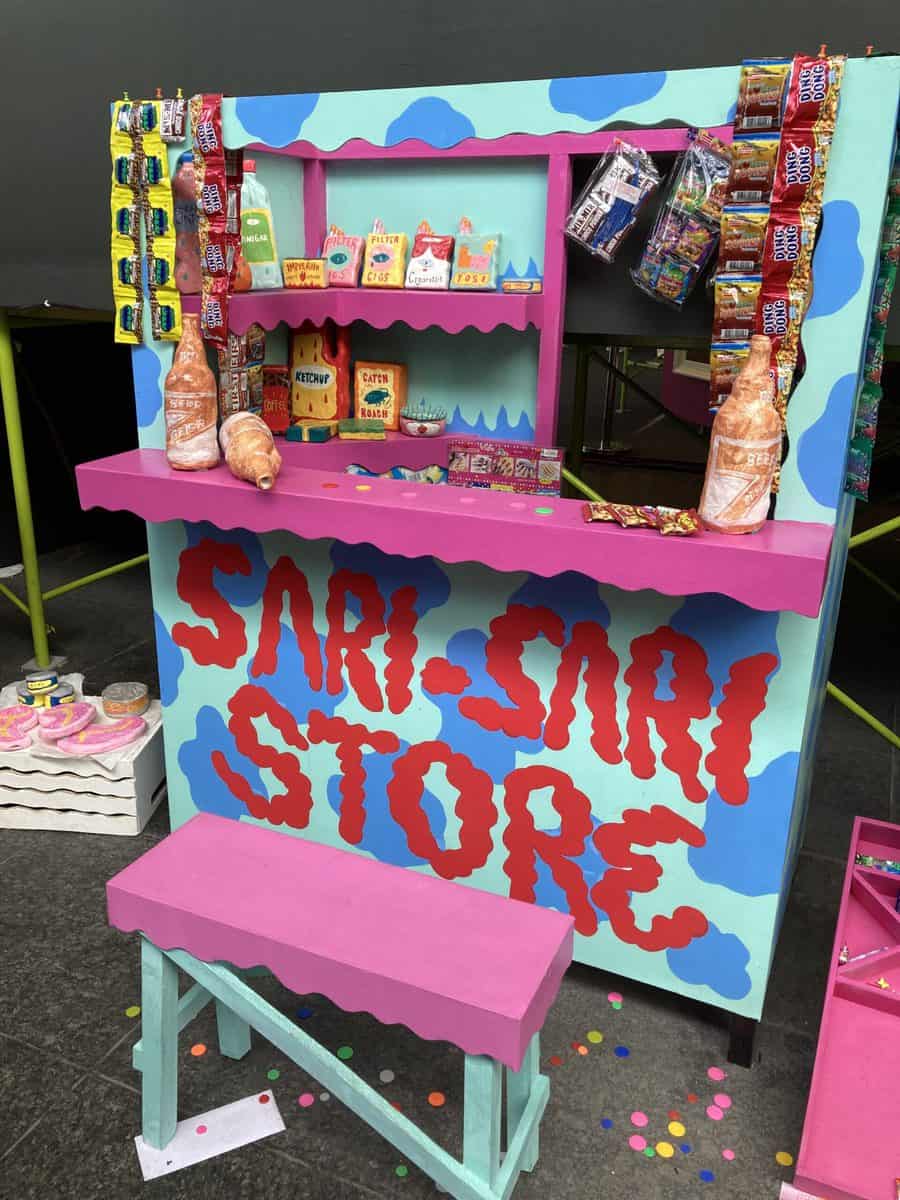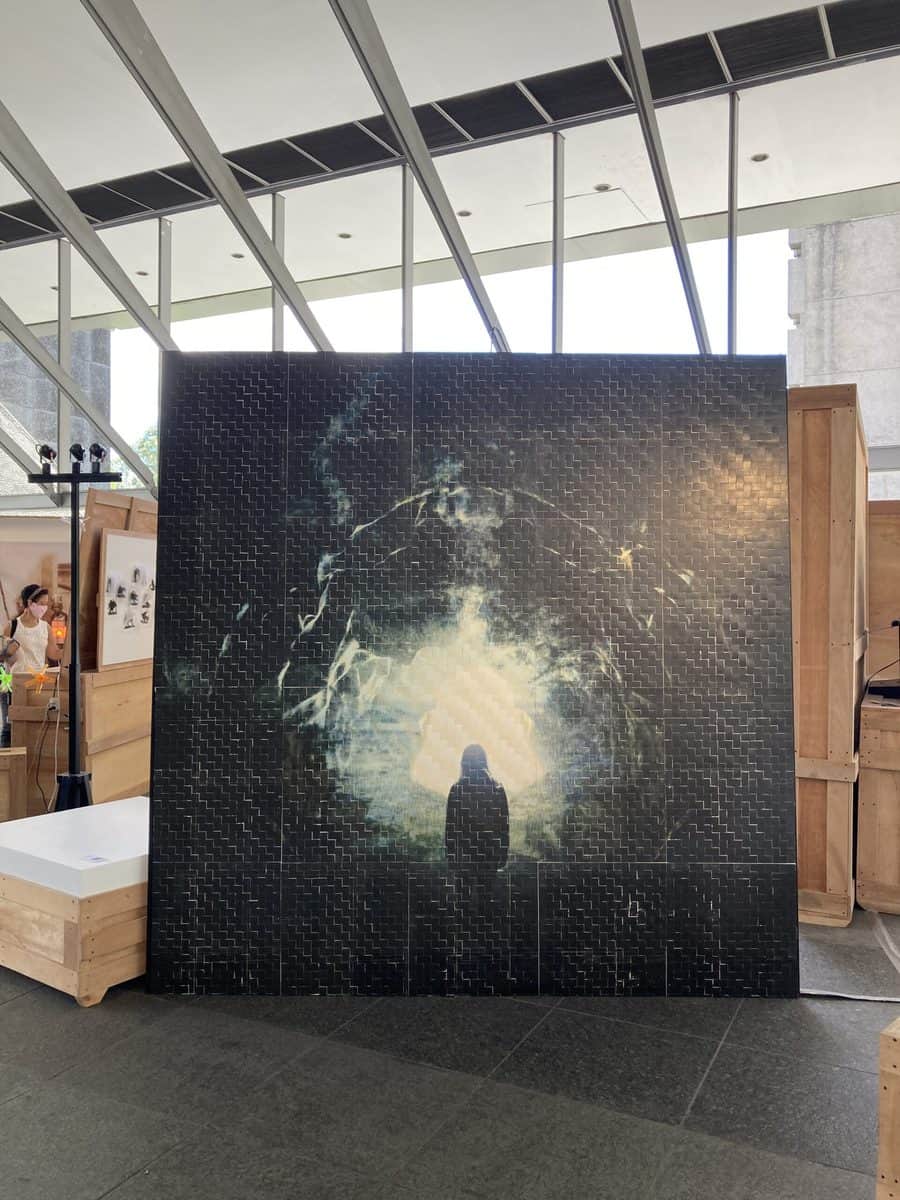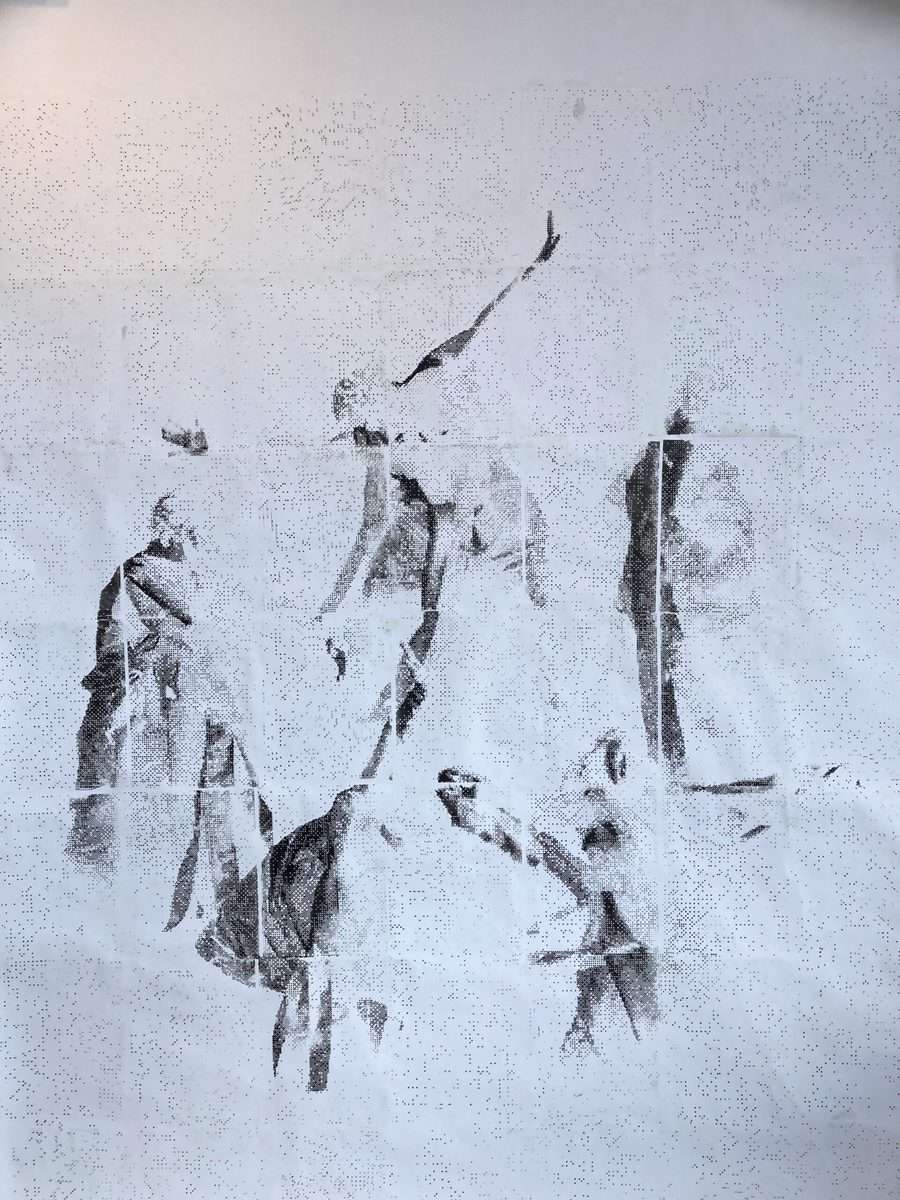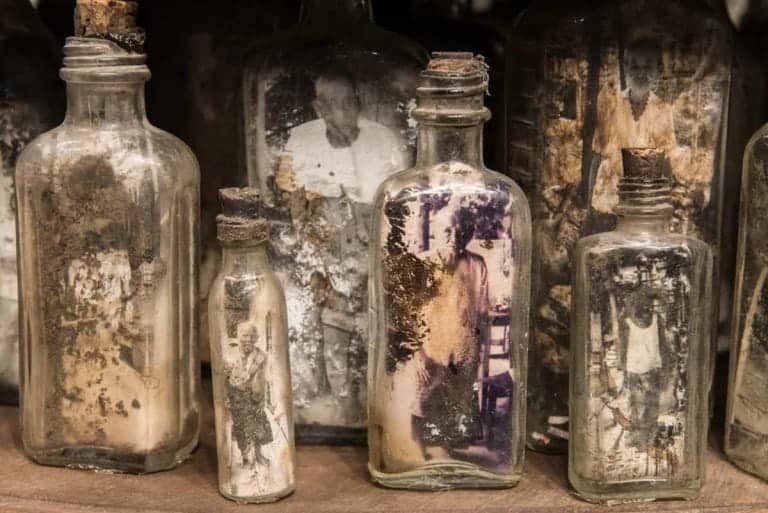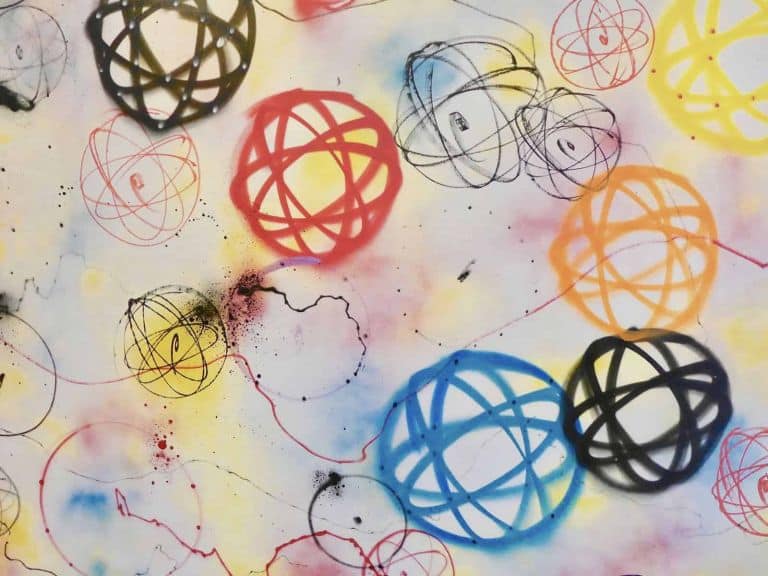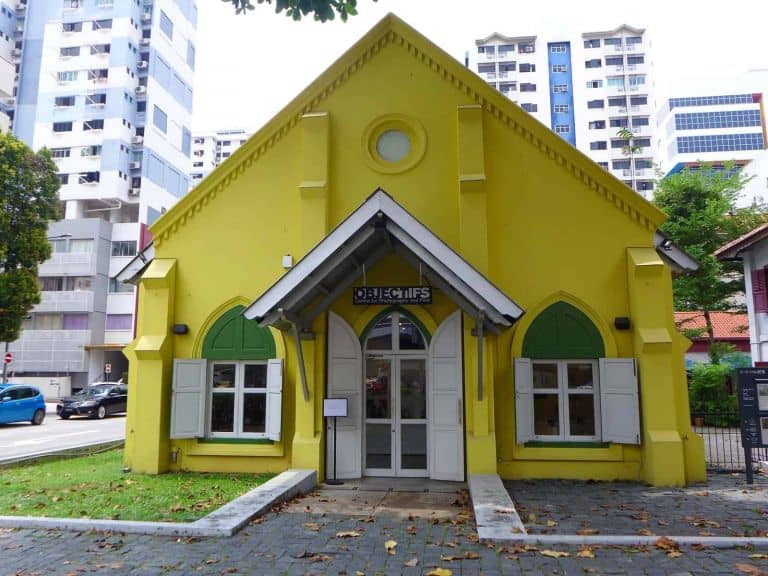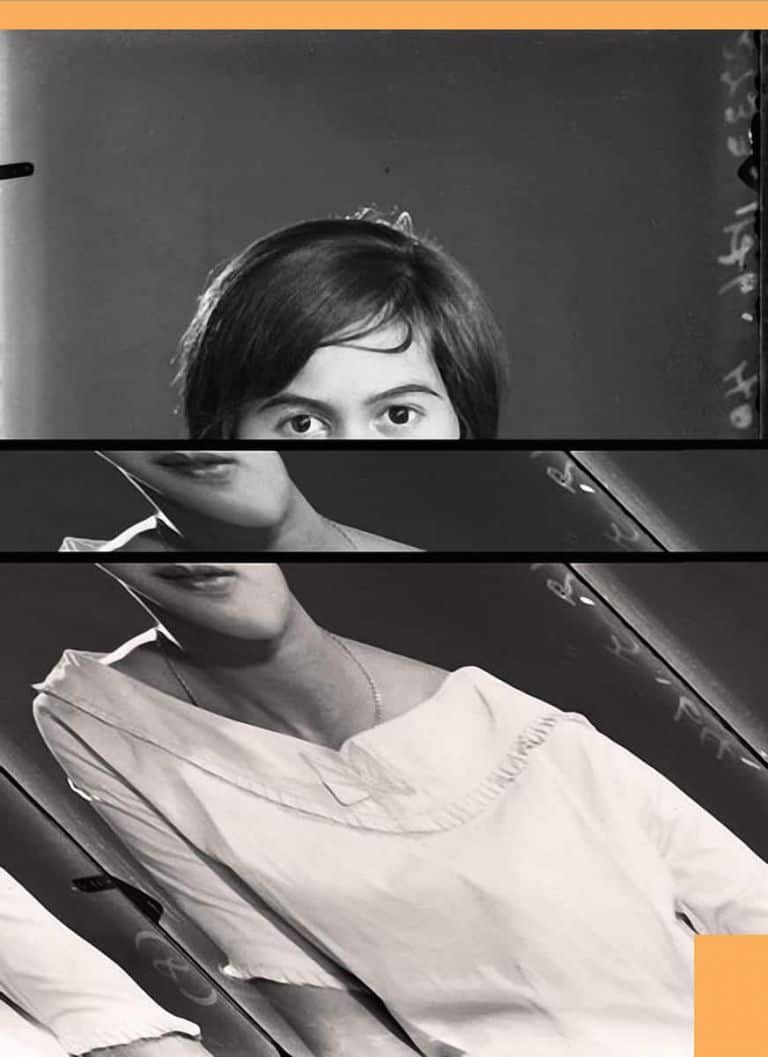There is a painting at the entrance of this year’s Art Fair Philippines Projects section that is easy to miss amidst the large-scale paintings and vibrant installations on display.
Yet once you see it, it’s hard not to be pulled in by its sheer absurdity: it’s a haunted landscape, filled with flora and tiny ghost-like creatures, set against a vivid, pink and purple sky containing a rainbow. A pathway lined with a broken fence leads to what looks like an abandoned house—until one notices a warm, gentle light glowing from one window.
This painting by Bjorn Calleja seems to capture how hope can coexist with dread, and how joy can feel all the more audacious amidst dark, unknown terrains. Inconspicuously, it sets the mood for this year’s Art Fair Philippines.
Over the past decade, the annual fair has arguably grown to be the biggest event in the Philippine art scene. Visitors grew exponentially by the year, from 6,000 when it began in 2013, to an average of 25,000 in recent years. Complaints of impossibly long lines and selfie-takers blocking views of the art aside, it was hard not to appreciate the fair’s eager and wonderfully diverse audience. This audience was composed not just of artists and collectors, but hordes of young people and students, a development that can only be enriching for Philippine art and its appreciation.
When the fair transitioned online last year because of the pandemic, I couldn’t help but miss the thrill of immersing in this unruly sea of people and art.
I wondered when, and how, that would ever come back.
This year, the fair takes on a hybrid format for the first time, offering a wide range of both online and offline events. There are 46 exhibitors from the Philippines and abroad, but they are no longer sprawled out at the fair’s iconic car park venue. Instead, visitors can view galleries’ shows either by visiting their pages on the fair’s website, or their physical locations with the help of a ‘Gallery Hop’ guide.
Now outdoors at the Ayala Triangle Gardens, the main set-up thus makes for a truly rare art fair experience. Without gallery booths that compete for your attention and make art fairs feel like high-end bazaars, you almost forget that you are at a fair and that the purpose of it all is ultimately to sell works of art. Instead, a compelling show curated by Norman Crisologo steals the spotlight. It features 10 Filipino artists—around half of whom I had never heard of.
Entering the Projects section, visitors first encounter the grotesque, horror-vacui works of Doktor Karayom.
Dozens of crude figurines fill up shrine-like installations, which serve as channels not to gods but to the chaos of the human psyche. Loud and visceral, each work evoked a distinct mood: one was painted in fiery red, capturing the hellish depths of mental turmoil; another was covered in blue cloud-like forms and winged creatures, a literal, almost satirical depiction of the feeling of ecstasy.
Walking through these works made me feel dizzy and nauseated. They reminded me of how the pandemic heightened our sensitivity to our inner worlds; how despite the absence of tight crowds, being alone with my emotions and anxieties would at times leave me feeling even more suffocated.
After Karayom’s works, visitors are released into the centre of the show. Here you will find Aze Ong’s light, web-like tapestry, filled with organic forms and soft pastel colours blending with the cream textile. Delicately hanging in space, it gives visitors space to breathe.
I was deeply moved by how the work physically immersed me. I drew close and marvelled at its intricate details and textures; I walked beneath it and looked up and felt like I was part of one long, rhythmic meditation.
The crocheting technique made me recall how during those first uncertain months of the pandemic, people across the world embraced crafting as a way to cope. While the work was the fruit of one artist’s solitary process of healing, it revealed glimmers of the collective, the quiet beauties in the threads that bind us to others.
Behind Ong’s piece, popping out against a bright orange panel are the paintings of social realist artist Nunelucio Alvarado.
Alvarado hails from the province of Negros Occidental, and the fact that it was, to my recollection, my first time encountering his works reveals how Manila-centric my exposure to Philippine art and art history has been.
Yet his bold, gritty paintings of the plight of sacadas, contractual sugarcane workers, prove how he is more than deserving of the success he earned in the 1990s and his resurgence today. His paintings are filled with strong, primary colours; provocative symbolism; and characters whose big eyes and piercing gazes make it hard to turn away.
The piece that pulled me in the most, however, was the smallest painting on display.
Three homeless people lie in a fetal position on a staircase, littered with trash and flies. Unlike in his bigger works, the characters’ eyes here are closed. They are sleeping, resting. This is a painfully common sight on the streets of the Philippines, yet the starkness of the image in this painting hits at a gut-wrenching level.
On his 71st birthday, Alvarado said that he thought the world had forgotten him. Perhaps beneath the surface of his words was a deeper longing for the world to acknowledge and remember the subjects he centred.
Near Alvarado’s works were the paintings of another social realist whose name was also unfamiliar to me, the late Lazaro “Arô” Soriano.
They are similarly packed with ironic social scenarios and vernacular themes, yet are lighter and more overtly infused with humour. Encountering his works, I couldn’t help but smile at the wit of his caricaturist figures: A man sings while washing dishes, his ears covered in makeshift headphones in the form of teacups. Two outwardly demure ladies, one of whom is dressed in the traditional baro’t saya, gaze knowingly and tensely at the viewer, as if quietly resisting the sweet and docile ‘Maria Clara’ stereotype imposed on the Filipina.
I find myself wanting to enter these scenes and interact with Soriano’s characters—who, even while cooking or cleaning, seem to find a way to party.
This organic sense of play continues on to the works of Tyang Karyel, whose bright installations of distinctly Filipino establishments could serve as perfect settings for Soriano’s characters.
There is an ukay-ukay, the Filipino thrift shop typically overflowing with piles of clothes and cramped racks, true to its name that allegedly came from the word hukay, meaning “to dig”. There is a sari-sari store, the ubiquitous convenience store that offers goods in small quantities, such as candies, soft drinks and cigarettes, especially for those who cannot afford to buy these things in larger volumes. Adorned in pop, pastel colours and a cartoon-like aesthetic, Karyel’s versions of these stores almost feel like playhouses, shamelessly embracing the make-believe worlds of children.
Karyel’s works led me to the end of the fair’s Projects section, but there is a small, moving display beside it that should not be missed. It showcases works created in the fair’s Residencies program, which supported five residencies across the Philippines over the past year.
I noticed how in contrast to the loud, colourful works of the Projects section, most of these recent works were in black and white, radiating a sober mood. There is a haunting piece by Faye Abantao depicting the silhouette of a woman in front of a bright flame at night.
The image is embedded on a paper weave tapestry, where the artist sought to interweave the stories she heard while she was immersed on the island of Palawan and was exposed to both its “glory and darkness”.
A delicate work on paper revealing shadows of bodies in raw, graceful movement led me to the film project of Jao San Pedro.
During her residency at the surf town of La Union, she collaborated with movement artists to explore the capacity of their bodies to “process, break down, transgress, and transgender binary code and structure.” For the filmed performance, San Pedro dressed the movement artists in costumes made of silk from a local sericulture centre, and gave them prompts to set them in motion.
There was something powerful in not only watching the vulnerable gestures of the artists’ bodies, but in reading the text accompanying the work. It was written by David Loughran, one of the residency’s co-founders, who witnessed that culminating performance in the flesh:
“All of us banded together to not only support Jao, but to impel ourselves towards her interior world . . . We weren’t spectators in the transformations that occurred on this night. We were fully in it; now, we know infinitely better.”
These words capture what seemed to make this year’s Art Fair Philippines particularly special. Yes, it’s significantly smaller—but perhaps because it is, you can feel the genuine effort to elevate artists, especially those who have long-deserved recognition or have been relegated to the margins of our art history.
I left feeling like I had only seen small glimpses of the hard work and care of the communities that uplifted our artists and reminded them, through all the struggles of the past two years, that their work matters.
That their works are the lights in abandoned homes; the pink skies amid dreary landscapes.
That because of them, we are infinitely better.
____________________________________
Art Fair Philippines runs at Ayala Triangle Gardens in Manila till 1 April. More details can be found here.
